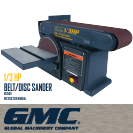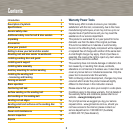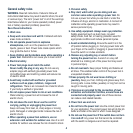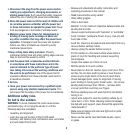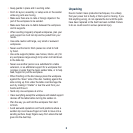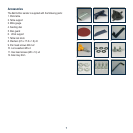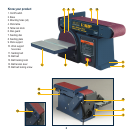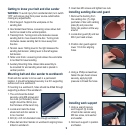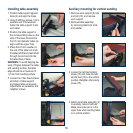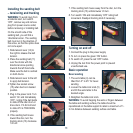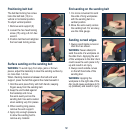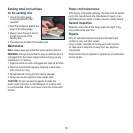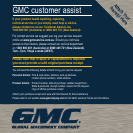6
• Keep guards in place and in working order.
• Don’t do layout, assembly, or setup work on the sander
while any parts are moving.
• Make sure there are no nails or foreign objects in the
part of the workpiece to be sanded.
• Make sure there are no debris between the workpiece
and its supports.
• When sanding irregularly shaped workpieces, plan your
work support so it will not slip and be pulled from your
hands.
• Use extra caution with large, very small or awkward
workpieces.
• Never use this tool to finish pieces too small to hold
by hand.
• Use extra supports (tables, saw horses, blocks, etc.) for
any workpieces large enough to tip when not held down
to the table top.
• Never use another person as a substitute for a table
extension, or as additional support for a workpiece that
is longer or wider than the basic sander table, or to help
feed, support or pull the workpiece.
• When finishing on the disc always press the workpiece
against the “down” side of the disc. Sanding against the
side coming up from under the table could damage the
work by making it “chatter” or tear the work from your
hands and throw it.
• Sand only one workpiece at a time.
• Clear everything except the workpiece and related support
devices off the table before turning the sander on.
• Plan the way you will hold the workpiece from start
to finish.
• Avoid awkward operations and hand positions where a
sudden slip could cause fingers or hand to move into a
sanding surface. Keep fingers away from where the belt
goes into the dust trap.
Unpacking
Due to modern mass production techniques, it is unlikely
that your power tool is faulty or that a part is missing. If you
find anything wrong, do not operate the tool until the parts
have been replaced or the fault has been rectified. Failure
to do so could result in serious personal injury.



